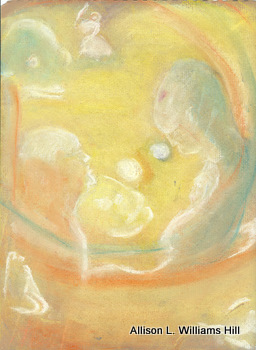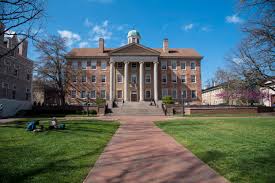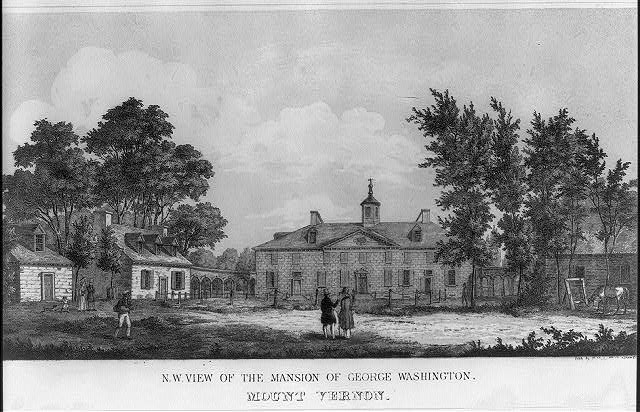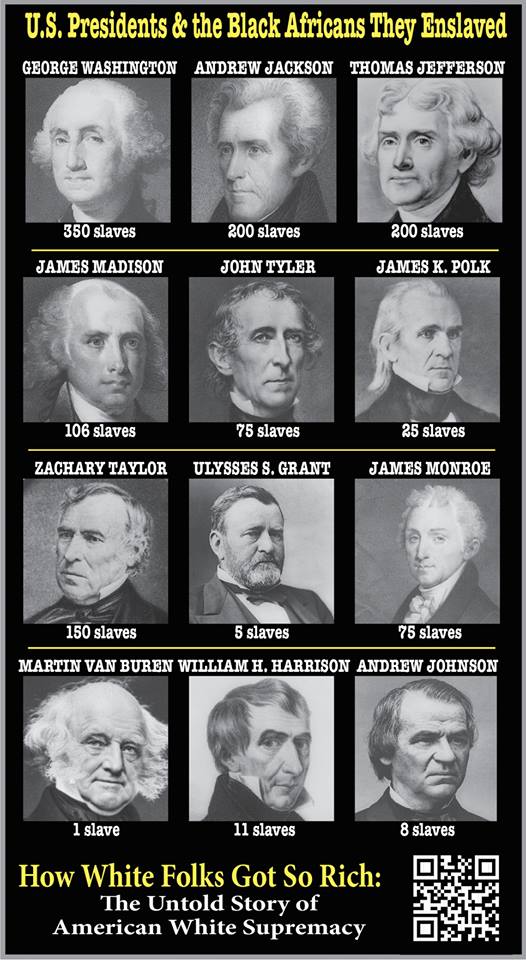Architecture and Slavery

rchitecture and slavery were integral in ancient cultures and unfortunately, in the United States during one the most insidious periods of American history.

Architecture and slavery was a small part of the history of architecture classes in Pratt Institute School of Architecture's curriculum. More time was used studying Europe than Africa. As each student was required to present, I chose Arata Isozaki, a Japanese architect. I entered and stayed in the limbo of unawareness not thinking of Africa at all, an entire continent with history over 100,000 years old that was worth examining.
Never, in the entire time I attended college, did I think of slavery, in particular, with respect to the construction of public and private structures in the United States. Pyramids and slavery was briefly mentioned. The human power required to erect them was massive and was integral to the method of construction. Still, for the most part, it is conjecture: images depict some of the mechanical, animal, and human activities. However, engineers continue to publish plausible "secrets" of construction. The focus in architecture history was more on the end product. Rarely was it ever on how it was accomplished.

Merge with Krishna by Allison L. Williams Hill
African and first generation slaves were forced to construct several well-known buildings in the United States. They were also forced to construct lesser known buildings throughout the southern United States. In South Carolina, tours for large plantation estates are a tourist attraction.

Architecture and Slavery and Southern Red Brick
Within Orangeburg, South Carolina there were many large homes with exterior brick veneers. Slavery by Another Name, a fact-filled, emotional soul-ripping book by Douglas A. Blackmon included information on red brick production. Slave labor enabled the owners to pocket enormous profits as labor was pretty much free, having minimal costs in human necessities. Enslaved Africans worked until they died and were buried in mass unmarked graves. It almost makes one wish for more large developments because the site work would inevitably unearth these secrets.The most the bones will reveal are the genders and the diseases they experienced. Whites learned that the red bricks, which had their identifying mark on them, were made by slave labor, and anti-slavery sentiment grew and brick sales slowed measurably.

What My Presentation on Architecture and Slavery Could Have Included
Aside from pyramids in Egypt, I would have included pyramids from all over the world. But the Continent of 90 Countries, of different peoples and cultures was rich in knowledge and execution in awareness of nature - the passage of time, solstices and other events that are also reflected in other cultures' architecture. I showed some of these in the Pyramids.
ARCHITECTURE AND SLAVERY in US Buildings

The lack of melanin supported the white mentality of superiority.The poster above is appropriate for several of the buildings shown below: structures that represent this government of the Republic of the United States, and estates of some of the Founding Fathers responsible for its creation, closed minded racists that they were.

Wall Street
The country’s financial center was named after a wall that was built in 1653 to protect settlers from Indian raids. Freed and enslaved Africans formed a significant part of the labor pool that created the wall, as well as other infrastructure and buildings in what is now Lower Manhattan, including Trinity Church (there was a slave market at Wall and Water streets, and slave ships would dock at what is now the South Street seaport). According to the church’s archivist, the parish, which was founded in 1696, utilized slave labor at several points during its early history, with many early members contributing slaves to help construct the initial church (which burned down in 1776).

University of Virginia Founded by Thomas Jefferson
"The esteemed southern university has always celebrated its traditions and heritage. In 2007, the school’s Board of Visitors passed a resolution expressing regret for the use of slaves and slave labor at the school, which were utilized in the construction of key buildings, including the central rotunda.

UNC-Chapel Hill
In a 2005 exhibit titled “Slavery and the Making of the University: Celebrating Our Unsung Heroes, Bond and Free,” the university displayed historical documents and records showcasing how the institution, founded in 1789, utilized slave labor to erect many early buildings. The Unsung Founders Memorial, unveiled in 2002, honors those "people of color bound and free" who helped build the university. UNC is far from the only institution of higher learning conducting similar research and striving to be more open about its own history, as many other universities have come forward in recent years with similar stories and monuments.
Where are the bodies buried?

Monticello, NPR
Monticello
During the construction of Thomas Jefferson’s Virginia estate, slaves assisted many of the local laborers who built the sprawling estate, especially carpenters. Much of the structural woodwork and framing was provided by slave carpenters. John Hemmings, who trained under white workers and was considered more than a standard assistant, crafted fine mahogany furniture and served as a carpenter and cabinetmaker beside James Dinsmore, the Irish joiner credited with Monticello’s elegant woodwork. Hemmings, responsible for the interior woodwork on another Jefferson property, Poplar Forest, was also beloved by the Jefferson grandchildren for the toys he made for them (they called him “Daddy Hemmings.”)
The story about Sally Hemmings, his "relief" has made headlines. My opinion is that there was nothing special there; white women may have left the needs of their husbands to their own devices. I have been reading more about the sexual activities and practices of white males in that era. A law stated that having sex with a Black woman was not considered rape because they were promiscuous. I question the intelligence Jefferson claimed he found or enjoyed in Miss Hemmings.
Women, THEIR women, were considered less intelligent than themselves, so why would a woman of African descent, given how whites felt about Africans, be considered intelligent, and an apt companion?

Mount Vernon
George Washington relocated his slaves back and forth between Pennsylvania and New York in order to avoid emancipating them. The home and plantation of the nation’s first president ran on the labor of hundreds of slaves owned by him and his wife, many of whom specialized in different trades, including woodworking and blacksmithing.
Many of the structures spread across the grounds of Mount Vernon, including a unique 16-sided barn for grain processing and storage, were built by slave laborers and carpenters, often overseen by longtime head carpenter Thomas Green.
In 1780, Pennsylvania passed the Gradual Abolition Act, a law that freed people after they turned 28 and that automatically freed any slave who moved to the state and lived there for more than six months. Dunbar tells the story of how Washington got around it:
Washington developed a canny strategy that would protect his property and allow him to avoid public scrutiny. Every six months, the president’s slaves would travel back to Mount Vernon or would journey with Mrs. Washington outside the boundaries of the state. In essence, the Washingtons reset the clock. The president was secretive when writing to his personal secretary Tobias Lear in 1791: “I request that these Sentiments and this advise may be known to none but yourself & Mrs. Washington.”
One of his slaves successfully escaped via the Underground Railroad.

Isaac Jefferson, Slave of Washington c1845
Sources
1. "George Washington Used Legal Loopholes to Avoid Freeing His Slaves"
2. "What It Was Like To Be A Slave At George Washington's Mount Vernon"
Washington & Lee University
As the name would suggest, Washington & Lee has ties to the American South and its history with slavery. John Robinson, a Southern landowner who passed in 1826, left his land and property with Washington College. Land gifted to the academic institution would later form the home of another school, Southern Virginia University, while the 84 slaves gifted by Robinson helped construct the Washington & Lee campus.

Re-enslavement of African Slave Labor
Douglas Blackmon's book documented the many ways whites "recaptured" freed slaves into various types of servitude that were difficult to escape. Illiteracy, lack of points of reference while moving north, and other made up nonsense made it easy for the ones in power to impose their power after Black people finally were, if for a moment, in a position to self-determine. It was not easy. The dissonance that served whites to continue treating them as animals supported the unquestioned methods of forcing them into labor camps. This was the labor force for railroads and more architectural projects. Blackmon researched the possibility of the north benefiting from Black labor and it did. There really was no freedom.

Source
Study/Read More
1. "White people did not exist on planet earth before 1681."
2. "Any claim that white people are rooted in biology or derived from genes is a lie."
Whites consistently ignored African achievements because their culture and behaviors were not reflected in them. After all,if you erroneously thought of yourself as God, then all people, all over the world, should look, think, behave,and record history as you do. When Plato and others went to Egypt, it is said there was respect for the source of knowledge. The cognitive dissonance occurred (Jacqueline Battalora, Ph.D.) for their interests-greed and fear.

"As Roosevelt himself would put it, A perfectly stupid race can never rise to a very high plane; the negro, for instance, has been kept down as much by lack of intellectual development as by anything else; but the prime factor in the preservation of a race is its power to attain a high degree of social efficiency. Love of order, ability to fight well and breed well, capacity to subordinate the interests of the individual to the interests of the community, these and similar rather humdrum qualities go to make up the sum of social efficiency. The race that has them is sure to overturn the race whose members have brilliant intellects, but who are cold and selfish and timid, who do not breed well or fight well, and who are not capable of disinterested love of the community." (qtd. in Dyer 110)
Sources
2. The (Not So) Secret Racist Moments of American Presidents BY JASON DUAINE HAHN, FEB 16, 2015

Theodore Roosevelt, was friendly with Booker T. Washington but that was as far as it went. There was never any intention to integrate Black people into this society. That is fine. I wish people would work towards assimilation or repatriation. When slaves were freed, very few whites had the ability to run their plantations. In that no credit was given to slaves, apparently, because they had white overseers. Without overseers, they would amount to nothing. Without slaves, it is likely that none of these architectural structures, ASSOCIATED WITH FREEDOM, would have been constructed.
There is evil in the world. Acknowledgment, ownership precedes healing and correction. Miracles are corrections, moving humans towards the path the Creators intended.
Links

The above meditation mandala will be available soon.

















